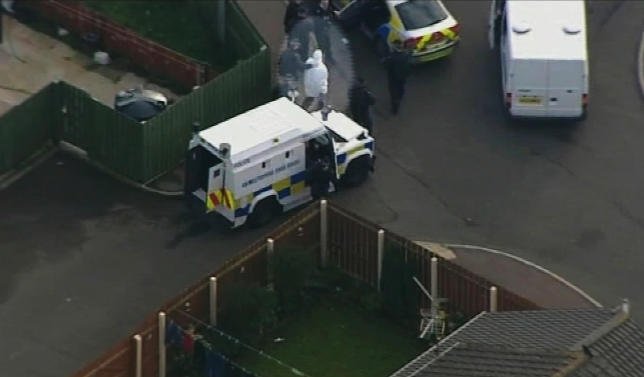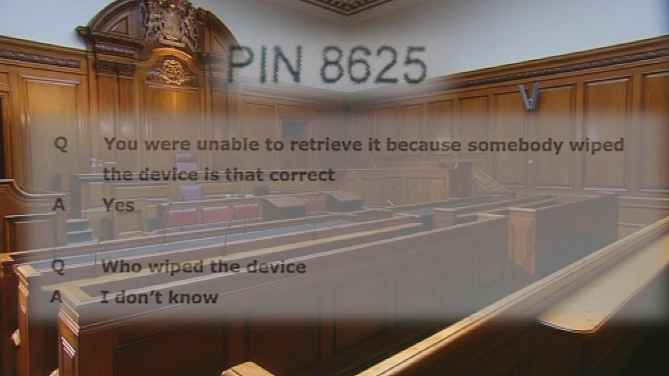THE British army had secretly bugged a car belonging to a dissident suspect on the night he was allegedly involved in the murder of police constable Stephen Carroll.
However, it can now be revealed that evidence from the bugging device was later destroyed while held inside a supposedly secure compound at an army base.
Constable Stephen Carroll became the first member of the PSNI to be murdered after he was shot while responding to a 999 call in Craigavon on the night of March 9, 2009.
The killing came just 48 hours after Real IRA gunmen had shot dead two soldiers at Massereene army barracks in County Antrim. For sometime beforehand the authorities had warned of a rising threat emanating from the various dissident Republican groupings.
Three days before Constable Carroll’s murder, then Chief Constable Sir Hugh Orde had announced that he had called in an undercover British army unit to help police target dissident republicans.
He said that the Special Reconnaissance Regiment, based at the SAS headquarters in Hereford, England, would increase the PSNI’s “technical ability” but would have “no operation role.”
Orde’s decision raised issues for members of the Northern Ireland Police Board.
The SDLP said the deployment of the undercover unit had raised “the issue of who is in control” of intelligence in Northern Ireland, while Deputy First Minister, Martin McGuinness, said it had shaken his confidence in the chief constable.
The Continuity IRA’s killing of Constable Carroll was viewed as a direct challenge to Hugh Orde and the security services.
Within 48 hours the PSNI had arrested a number of suspects
One of those arrested was 17 year-old John Paul Wooton.
The teenager’s Citroen Saxo car was seized by the PSNI at the same time.
Former Sinn Fein councillor Brendan McConville was another of those questioned.
Both men were later charged with the policeman’s murder.
In court, prosecution lawyers would later allege that Wooton’s car had been parked 150 yards from the scene of the shooting and had driven off within minutes of the killing.
McConville’s DNA is alleged to have been found on a jacket recovered from the boot of Wooton’s car, which prosecutors claim also contained gun residue from the murder weapon.
One witness claimed to have seen McConville close to the scene of the shooting before the attack.
Another claimed that she had witnessed Wooton’s car parked outside McConville’s home on the morning after the attack.
It can now be revealed that the Special Reconnaissance Regiment had been covertly bugging Wooton’s car and tracking its movements on the night of Constable Carroll’s murder.
But alarmingly, army chiefs have admitted in court that data from the device used to track the getaway car on the morning after the shooting was inexplicably destroyed.
In May 2010 a soldier from SRR made a statement to police confirming that it had Wotton’s car under constant surveillance, including the night of the policeman’s murder.
According to a witness statement seen by The Detail, the undercover soldier, whose identity has never been revealed, told detectives:
``I am in the British army, `PIN 8625’.
``I was asked to deploy a vehicle tracking device against J.P. Wooton’s vehicle, which was a gold coloured Saxo registration number FCZ 9046.’’
The level of undercover surveillance targeting Wooton was at such a level that the tracking device was programmed to send a signal from the teenager’s car via satellite every two minutes.
``Once the device was deployed, my role was to retrieve the data from the vehicle tracking device,’’ he said.
The device, understood to have been hidden in the engine of Wooton’s car, transmitted coded data back to an undisclosed army base, where SRR was secretly monitoring his movements.
Two days after Constable Carroll’s murder `PIN 8625’ was ordered to go to Maydown PSNI station on the outskirts of Derry where the teenager’s car had been taken following his arrest.
He recovered the tracking device and brought it back to SRR’s undisclosed base somewhere in Northern Ireland.
In January this year, `PIN8625’ became the first member of the Special Reconnaissance Regiment to give evidence in court since Sir Hugh’s announcement that he was deploying the specialist undercover unit to Northern Ireland in March, 2007.
His evidence went unnoticed as no members of the media were present in court for his testimony.
However, The Detail, has now obtained copies of his original statement to police and a transcript of his evidence to the court.
``I removed the vehicle tracking device from the Saxo and brought it back to my base,’’ he told police.
``I put the device into the storage area at the base.’’
He said that the potentially incriminating evidence contained on the tracking device was allowed to sit unsecured on a bench inside the army base while he went on extended leave.
``I returned to work six days later and discovered that all the data had been wiped off the vehicle tracking device which I had deployed against the Citroen Saxo.’’
However when he appeared in court, the undercover soldier claimed that only part of the evidence had been destroyed.
Speaking from behind a curtain, `PIN8625’ confirmed that data from the device had been wiped, despite being held in a supposedly secure army compound.
`` I was asked to look and see if the information was still there, which it wasn’t,’’ he said.
``You were hoping to retrieve the material right up until the car was recovered by the police on 10 March, is that right?’’ McConville’s solicitor Peter Corrigan asked:
A: ``Yes’’
Q: ``And were you able to obtain all that?
A: ``No.’’
Q: ``You were unable to retrieve it because someone had wiped the device is that correct?
A: ``Yes.’’
Q: ``Who wiped it?
A: ``I don’t know.’’
Q: ``Were you concerned that the device had been wiped?
A: `` It was unfortunate the device had been wiped but the details covering the event had been retrieved.’’
Q: `` So is it your evidence, is it, that all information up until the vehicle was taken by police was retrieved?
A: ``The dates are on the download, I can’t remember. The last download would give you the date and time of the last fix.’’
Q: ``You were aware that there was a gap weren’t you?
A: ``Yes.’’
Q: ``You were concerned about the gap naturally’’
A: ``It was unfortunate.’’
Q: ``Because potentially relevant evidence was lost?’’
A: ``Yes.’’
Confirming how his army superiors had launched an inquiry in a bid to discover who had been responsible for destroying the evidence, he was asked:
Q: ``There was an investigation wasn’t there in to who was responsible for wiping the data?’’
A: ``People wanted to know why the data was erased, yes.’’
Q: ``Your superiors were concerned?’’
A: ``They looked in to the reasons why the data had been erased.’’
`PIN 8625’was cross-examined further by Wooton’s solicitor Andrew Moriarty.
Q: ``Do you know how the data was wiped?’’
A:``No’’
Q:``Is it difficult to wipe the data?
A: ``No’’
Q: ``How long would it take to wipe the data?’’
A: ``Not sure I can answer the question. It depends on the duration and how much information is on it.’’
Q: ``Is there a procedure that has to be gone through to wipe data?’’
A: ``Yes.’’
Q: ``Can we infer from that it cannot be wiped accidentally?’’
A: ``It can be wiped accidentally’’
Q: ``Do you know whether it was wiped accidentally or whether it was wiped on purpose?’’
A: ``No I don’t.’’
The soldier was cross-examined as to how vital intelligence could have been left unattended and then destroyed inside a secure army base.
Q: ``Is the storage facility on your base secure?’’
A: ``Yes’’
Q: ``Would only authorised personnel be allowed to enter the storage area. ’’
A: ``A number of people can enter the storage area.’’
Q: ``Do they require specific authorisation or permission?
A: ``They would have to know how the kit works. The only people who would go in there are people trained in this kind of
operation.’’
Q: ``Is this a specific storage facility?’’
A: ``Yes.’’
Q: ``Can I take it only a small number of people with access?’’
A: ``Yes.’’
Q: ``And those people all have particular expertise with these devices?’’
A: ``Yes.’’
Q: ``In the storage facility, is there any sort of labeling system for the material stored within?
A: ``We label the kit with the particular operation that it is involved with.’’
The court also heard evidence from a weapons’ contractor, identified only as witness `J’, who had supplied the device used to track Wooton’s car.
Witness `J’ was cross-examined over `PIN 8625’s assertion that the tracking device could have been wiped by accident?
Q: ``There’s a set procedure isn’t there for retrieving information from the device, isn’t that correct?
A: ``Yes, that’s correct.’’
Q: ``There is also a set procedure for deleting information from the device, isn’t that correct?
A. ``Yes. that’s correct.’’
Q: ``And is it fair to say that these procedures are completely different?
A. ``The two procedures are completely different.’’
District judge Alan White ruled that Wooton and McConville should be returned for trial later this year, stating:
``It is not my place to decide if the device (used to track Wooton] was accurate.
``The court will decide.
``It is not a question of whether it was accurate regarding one location, but over a whole series of locations over time."
He added: ``It would be more important if “a consistent pattern of movement emerged” rather than the accuracy of the device in relation to one place.’’

